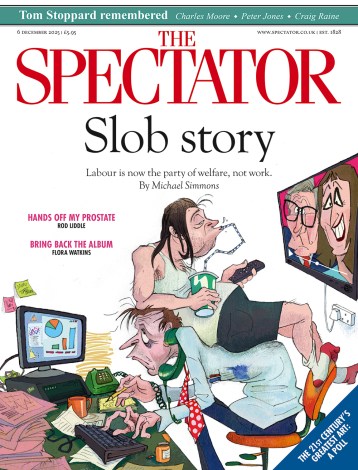The government desperately needs to save the justice system, and it believes that technology might be part of the solution. The Ministry of Justice has announced that it will be using AI to ‘stop prison violence before it happens’. The need is urgent. There were over 30,000 assaults in prisons during the 12 months to the end of March 2025, a 9 per cent increase on the previous year.
The reality is that this will all rely on the data provided by prison staff, which is often of very low quality
This is now Labour’s problem. As Andrew Neilson, Director of Campaigns at the Howard League said yesterday, ‘these statistics cover most of the government’s first year in power. While action is being taken to reduce pressure on the prison population and stabilise regimes, far more must be done, and urgently, to save lives and ensure prisons work to cut crime, rather than create it.’
So how will AI help? Describing a system more like that seen in Minority Report than our crumbling Victorian jails, the government says AI will ‘identify dangerous prisoners and bring them under tight supervision’. AI will analyse data on individual prisoners, including their offending history and behaviour in custody in order to allow staff to prevent violence before it happens.
Technology has already been deployed to rapidly scan prisoners’ seized mobile phones to produce intelligence on crime within jails, including the drugs trade. This is very timely, as this week the government has announced that drone incidents over our prisons are up by 43 per cent.
That’s the idea anyway. The reality of course is that this will all rely on the data provided by prison staff, which is often of very low quality. This week I attended the ongoing inquest into the death of Rajwinder Singh, a man who died at Wandsworth in 2023. During testimony I heard on Wednesday, it became apparent that the contact logs were not reflective of the visits to Rajwinder’s cell shown by the prison’s CCTV.
This is an extreme example, but anyone who has spent much time in prisons knows that they are often chaotic, badly-organised environments which rely on a huge amount of paperwork. If AI is fed garbage, it will be worse than useless.
The government has great hopes for technology in prisons, something which I know is driven by Lord Timpson’s personal enthusiasm for it. There are already some excellent examples of Large language models (LLMs) being deployed across the justice system. Probation have been piloting three different systems which take audio recordings of meetings between offenders and probation officers and produce transcripts, saving many hours of work.
Even within the probation profession there are doubts about this. Tania Bassett, National Official of NAPO, the probation union, told me that there were concerns about whether LLMs could cope with some regional accents (with Geordie identified as being particularly challenging), and that they are ‘approaching it with caution because of the MoJ’s history of being bad with technology, and we are concerned that this doesn’t become an excuse to replace people and relationships.’
All this investment in technology will come at a high price, something NAPO are also concerned about, particularly as they are currently balloting for industrial action. Bassett said ‘they’re spending all this money on technology but we’re in a strike ballot for pay – we’re concerned that this £700 million for probation will end up being squandered on technology which doesn’t solve the underlying problems’
Broadly, this kind of investment in technology is a good thing. The justice system in general, and our prison system in particular, are incredibly backward, with a huge amount of staff time spent manually completing forms and documents. If technology can free staff up to spend time working with inmates, engaging in purposeful activity and making prison actually work, then it could be a huge benefit.
There are likely to be challenges though. In particular, if there are perceived racial inequalities in who the systems identify as being likely to commit violence in jail, it is possible that legal challenges may be forthcoming.
In the end, a safer prison system will benefit staff, inmates and the public. Jails which are awash with violence can do almost nothing to help people reform. Most prisoners do not want violence on their ‘landings’. It might not quite be Minority Report, but if this halts the rising tide of violence in our prisons it will absolutely be worth it.







Comments